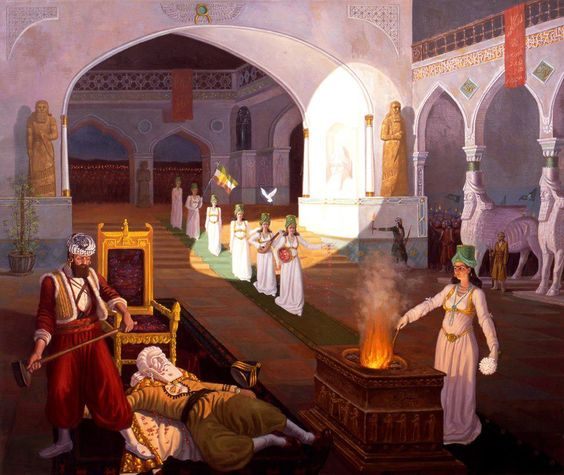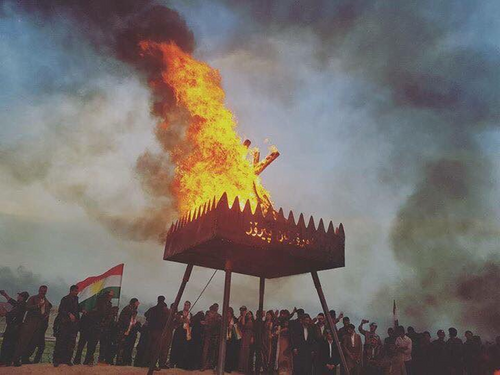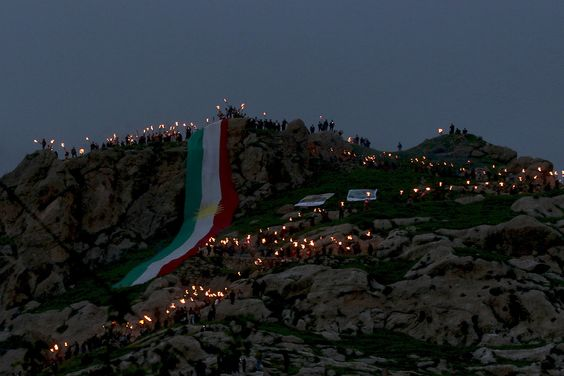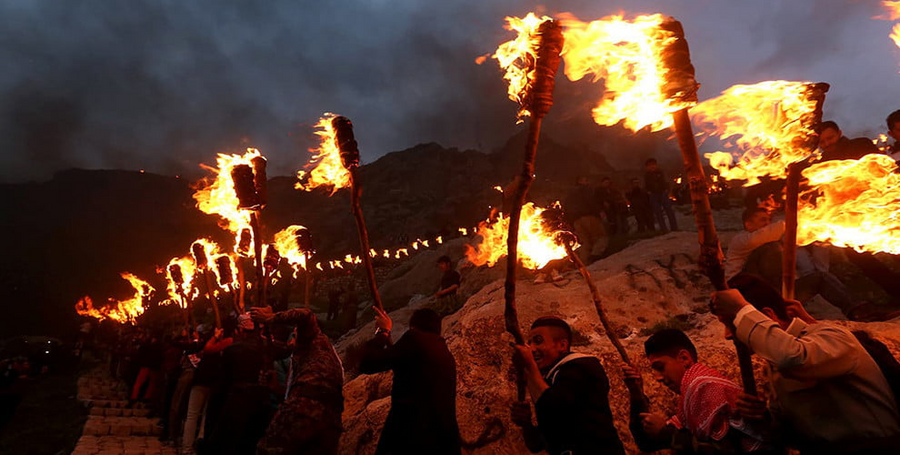In this article, I have tried to explain several important issues about Kurdish Newroz, because many misleading and unfounded articles and books have been written about Kurdish Newroz by the invaders of Kurdistan, but the reality of Kurdish Newroz is something else. For example, this article discusses the history of Newroz and Sumeria, the religion of Mithras and Newroz, the baseless story of Kaveh the blacksmith and Zuhak, the importance of Newroz in Kurdish folklore, and the impact of Newroz on the process of nation-building, etc.
Newroz is the oldest, greatest, and most important festival of all humanity in the Middle East. It has been celebrated in Kurdistan since its inception and has spread all over the world. It is a very important occasion for the Kurdish people and is celebrated every year in the spring when the snow melts, flowers appear, and hope grows in people's hearts, it is considered one of the most important historical occasions. This occasion is Newroz. Newroz means "Vazhin" and a new day and the Kurdish people celebrate Newroz every year on the first day of the Kurdish month, the first day of spring, as the renewal of nature.

It is known that in the past, Newroz had a great culture and every important event was held on Newroz. However, this occasion is very important for the Kurdish people because it has a long history and many historians say that the Median rule and the Kurdish people long before BC and on the first day of the first Kurdish month liberated Kurdistan from the Assyrians (612 BC). They celebrated this day and called it a new day. Some historians and researchers date the event back 4000 years.
Other historians say Newroz is associated with the renewal of nature and its origins go back to religions such as Mithras, Yazidis, and Yarsan.
I interviewed Professor Mawlud Ibrahim Hassan, a professor at Salahaddin University in Erbil, about this critical issue and the history of this ancient occasion of the Kurdish people. He said, "Newroz dates back to the Sumerian New Year, or the day of the resurrection of the Sumerian god "Dumuzi". According to the Sumerian religion, their god (Dumuzi) appears on the first day of spring, which is the first day of the Kurdish year and the first day of the month of Newroz; but the time and date go back to this. After the Sumerian god, Dumuzi goes underground on the first day of the seventh month and is resurrected on the first day of the new year, the resurrection becomes a great celebration that was a great festival for the Sumerians. This occasion was also during the rise of agriculture. All researchers date the celebration back to 10000 BC, or 12000 years ago.

Newroz and the religion of Mithras
Many historians believe that Newroz has been passed down to the Kurdish people from the religion of Mithras. However, some researchers believe that the occasion has nothing to do with the religion of Mithras, stems solely from the renewal of nature, and has nothing to do with any religion.
Like most of the festivals such as Summer, Winter (Yalda), Kharman, Planting, and Harvesting Festival, which are the oldest Kurdish festivals, Newroz is very old and we can say that this festival, like other ancient Kurdish festivals, was given importance in Mithras' time.
Zahak, Kawa the Blacksmith, and Newroz
The history of the Kurdish people has been miswritten due to the lack of an independent authority or the burning and theft of all ancient Kurdish historical documents by the invaders of Kurdistan. One of the stories is the story of Zahak and Kawa the Blacksmith. This story was misleadingly written by the Kurdish invaders and likened to Newroz, but Kurdish writers and historians say that both have nothing to do with Newroz.
This was an important topic for me and I wanted to focus on it, so I interviewed three researchers named Zainal Abedin Znar, Professor Mawlud Ibrahim Hassan, and Hadi Azizi; I asked them, is the story of "Zahak and Kawa the Blacksmith" related to Newroz?

First, Zainal Abedin Znar said, “Many things have been written in Kurdish history and imposed on the Kurds. One of them is the story of Zahak and Kawa the blacksmith. Zahak is said to have been king of the Arabs; let me say this at the beginning, in fact, the Arabs themselves are nomads and came from Africa to this land that we call Arabia and spread in villages and cities and had no power to have a king. However, it is possible that someone named Zahak appeared in the area and became a tyrant and someone named Kawa appeared and killed him, which is very normal, but Newroz has nothing to do with Zahak and Kawa. The story of Zahak is as follows: They say that he was a cruel man with two snakes on his shoulders that ate the brains of Kurdish youth. Then, the Kurds who were not unheated were sent to the mountains and became a population of the Kurd nation! This is a great injustice against the Kurds and a great mistake that has been made against the Kurds to reduce the Kurds and show them as a nation without foundation. Many such stories have been written against the Kurds. In fact, in the Madan Empire, the governor was called "Kawa". Kawa, Zahak, and Newroz have nothing to do with each other.
This article continues and in the next section, the researchers will answer the story of Kawa, Zahak, and other issues.








